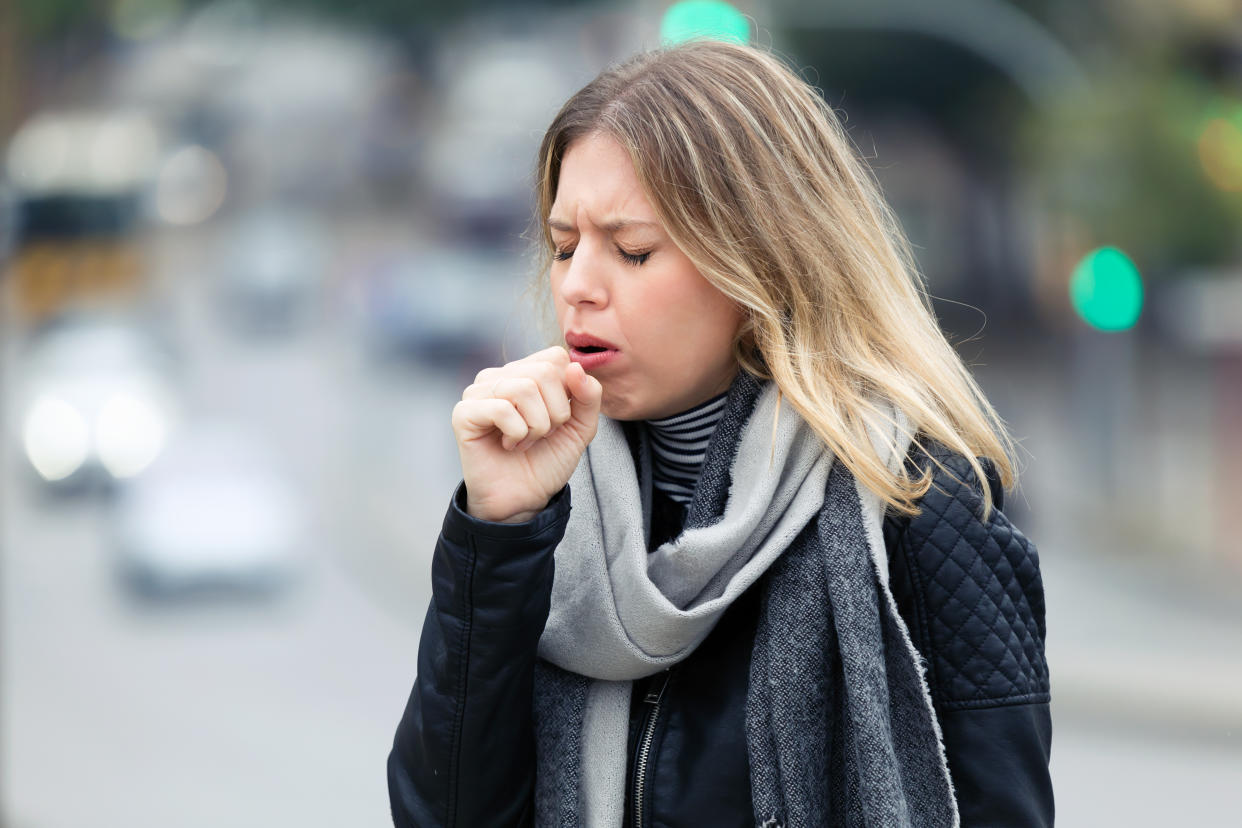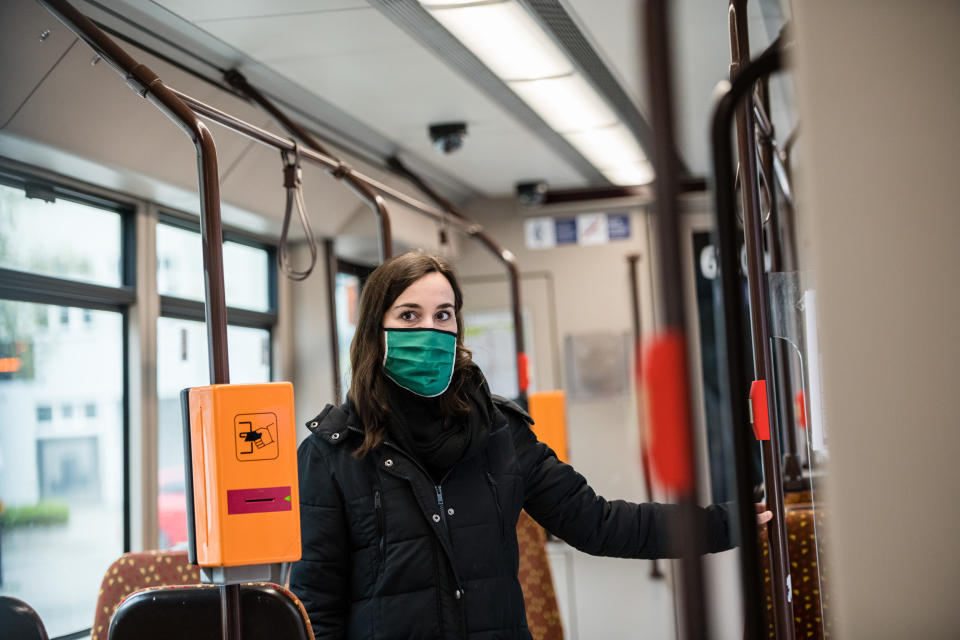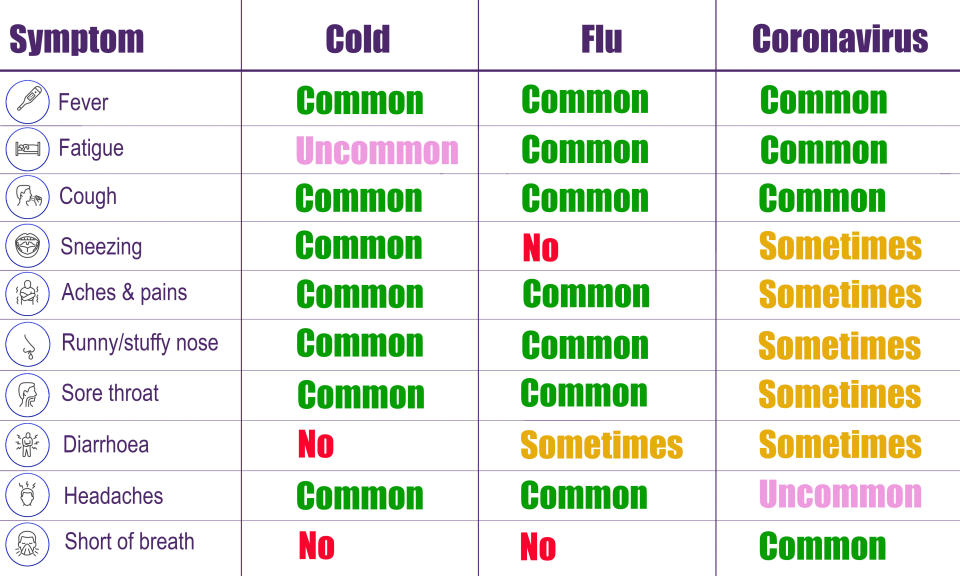Coronavirus: What a continuous cough actually means

A continuous cough is one of the tell-tale signs of the coronavirus.
With only hospital patients being routinely tested for the infection in the UK, anyone who develops a fever or cough has been told to self-isolate entirely in their home for seven days.
Other members of their household must do the same for two weeks.
The coronavirus arrived in the UK when colds and flu were rife, with many of us coughing and spluttering. Early research suggests the infection is mild in four out of five cases, however, it can trigger a respiratory disease called COVID-19.
As the weather warms up, hay fever season is around the corner, with many sufferers complaining of a cough they cannot shift.
A continuous cough may sound vague, however, health officials have set out what people should be looking for.

The coronavirus is thought to have emerged at a seafood and live animal market in the Chinese city of Wuhan at the end of last year.
It has since spread into more than 180 countries across every inhabited continent.
Latest coronavirus news, updates and advice
Live: Follow all the latest updates from the UK and around the world
Fact-checker: The number of COVID-19 cases in your local area
Explained: Symptoms, latest advice and how it compares to the flu
Since the outbreak was identified, more than one million cases have been confirmed, of whom over 212,000 have “recovered”, according to Johns Hopkins University.
Incidences have been plateauing in China since the end of February, and the US and Europe are now the worst-hit areas.
The UK has had more than 34,100 confirmed cases and over 2,000 deaths.
Globally, the death toll has exceeded 53,100.
Coronavirus: What is a continuous cough?
When it comes to the coronavirus, the NHS defines a new, continuous cough as “coughing a lot for more than an hour, or three or more coughing episodes in 24 hours”.
People who often battle a cough, like smokers or asthmatics, may find the coronavirus makes it worse.
The World Health Organization defines the coronavirus cough as “dry”, meaning it does not produce phlegm.
Other tell-tale symptoms include fever and mild shortness of breath, which tend to appear within five days of infection.
Evidence increasingly suggests a loss of smell or taste may be another warning sign, however, this is common with many viruses that infect the airways.
The coronavirus mainly spreads face-to-face via infected droplets expelled in a cough or sneeze.
Although sneezing is one of the main routes of transmission, it is an uncommon symptom.
Other less commonly reported signs of the virus include a sore throat, diarrhoea, aches and pains, and a runny or stuffy nose.
Government officials have asked suspected patients not to call the non-emergency number NHS 111 if they have symptoms due to the service being under strain.
Information can be found on the NHS’ website and 111 online.
The government states you can call 111 if your symptoms worsen, or have not improved, during or after isolation. Those without internet access can also call.
In an emergency, dial 999, letting the operator known you may have the coronavirus.

What is the coronavirus?
The coronavirus is one of seven strains of a virus class that are known to infect humans.
Four of these strains trigger common-cold like symptoms.
Another leads to severe acute respiratory syndrome (Sars), which killed 774 people during its 2002/3 outbreak. No cases have been reported since 2004.
Middle East respiratory syndrome (Mers) is also a coronavirus strain and killed 858 people during its 2012 outbreak. A handful of incidences still arise every year.
The coronavirus is usually mild, however, pneumonia can come about if the infection spreads to the air sacs in the lungs.
This causes them to become inflamed and filled with fluid or pus.
The lungs then struggle to draw in air, resulting in reduced oxygen in the bloodstream and a build-up of carbon dioxide.
The coronavirus has no “set” treatment, with most patients naturally fighting off the infection.
Those requiring hospitalisation are offered “supportive care”, like ventilation, while their immune system gets to work.
While coughs and sneezes are the main routes of transmission, there is also evidence the virus spreads in faeces and can survive on surfaces.
Officials urge people ward off the coronavirus by washing their hands regularly and maintaining social distancing.




